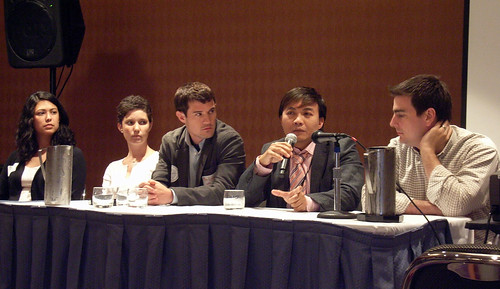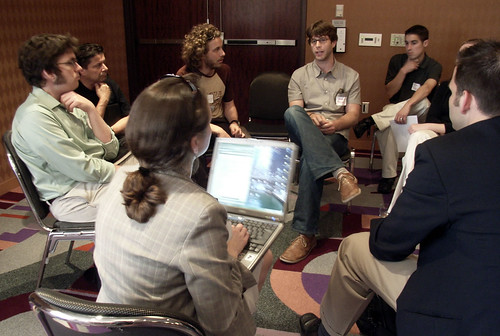
CNU XV Blog, Part 3: Nextgen 4

Just finished seeing most of the morning presentations at CNU Nextgen (by Russell Preston and Faith Cable).
Preston pointed out that the Transect may set the bar for pedestrian-friendly development too low, because so much development (both NU and conventional) is T3 (the suburban, relatively low-density zone). In a T3 neighborhood, some services are within walking distance, but fewer than in more intense neighborhoods. Preston's vision of the Transect is not a spectrum but a birthday cake: T4 and T5 are the cake that holds everything together, T3 merely the sweet icing, T1 the table upon which everything rests, and T6 the flaming candle at the top. All are important, but T4 and T5 are the bulk of the cake.
Preston's vision resonated with me, because I live in a city (Jacksonville) that doesn't have much T4 and T5- the walkable intown neighborhoods are arguably T3, the downtown is a lame parody of T6, and everything else is conventional sprawl.
Preston also asserted that 1/3 of demand for new development is for walkable neighborhoods, but only 5% of new development fits this mold. If he's right (a big IF) then we have a huge gap between supply and demand. Maybe this is an argument for pro-smart growth government regulation: the omnipresence of local zoning artificially limits compact development, so we need other regulation to counteract the effect of this regulation and bring supply in land with demand. (Of course, a libertarian would argue that the free market would be preferably to either this system or the status quo - but even so, smart growth regulation might be a "second best" alternative if abolishing zoning is politically impossible).
Faith Cable focused on environmental issues. One chart in her presentation really grabbed me: a chart listing energy consumption in various metropolitan areas. According to her chart, sprawling cities such as Houston consume the most energy, with compact American cities (such as NYC) producing less, and European and Asian cities producing less still. If these statistics are correct, they put the lie to the common pro-sprawl arguments that (1) pro-sprawl transportation policies reduce energy use by reducing traffic congestion and facilitating traffic flow, and/or (2) that increased fuel efficiency has made fuel waste a non-issue.
Photos by Payton Chung.




Comments
Write your comments in the box below and share on your Facebook!